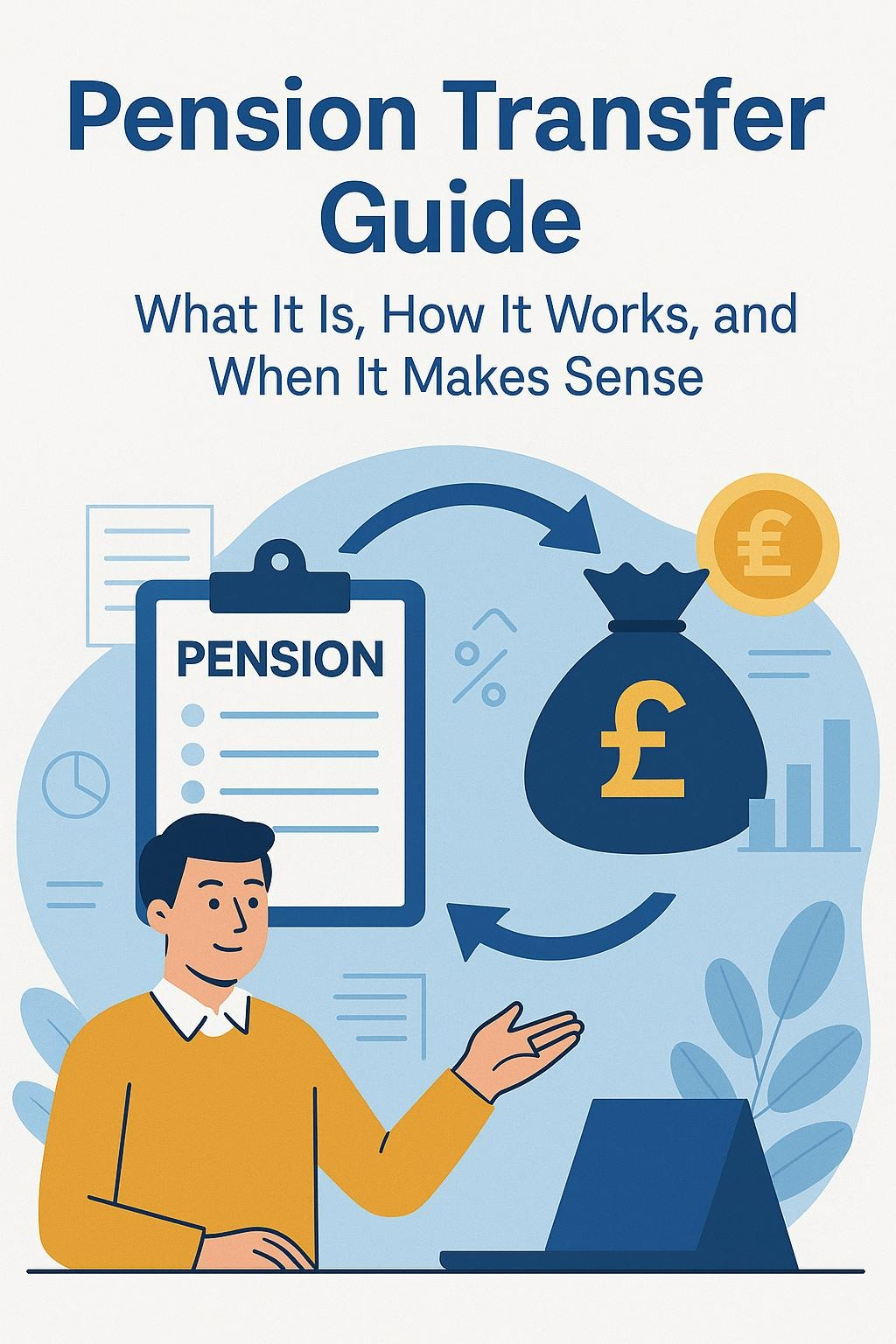

Pension Transfer Guide: What It Is, How It Works, and When It Makes Sense
If you’ve changed jobs over the years, there’s a good chance you have more than one pension pot sitting with different providers. Keeping track of them can be confusing, costly, and less effective for growing your retirement savings. That’s where a pension transfer can help.
In this guide, we’ll explain what a pension transfer is, when it makes sense to do one, and how the process works — so you can make an informed decision about your financial future.
What is a Pension Transfer?
A pension transfer involves moving your retirement savings from one pension scheme to another. This could mean transferring an old workplace pension to your current provider, or consolidating several pensions into one personal pension plan.
You can usually transfer:
- Personal pensions
- Defined contribution (DC) workplace pensions
- Some defined benefit (DB) pensions (with advice, and in certain circumstances)
The goal? Better control, fewer fees, and a clearer picture of your retirement plan.
When Should You Consider a Pension Transfer?
Here are some situations where a pension transfer might be worth exploring:
- ✔ You’ve changed jobs and have old pensions with various providers
- ✔ Your current pension is underperforming or has high fees
- ✔ You want more investment options or flexibility
- ✔ You want to simplify your finances and retirement planning
- ✔ You’re approaching retirement and need better access or strategy
Important: If you have a defined benefit pension worth over £30,000, you’re legally required to seek advice from a regulated financial adviser before transferring.
Pros and Cons of Pension Transfers
Pros:
- Combine all your pensions in one place
- Easier to track and manage
- Potential for lower fees
- More modern investment options
Cons:
- Risk of losing valuable guarantees (especially with DB pensions)
- Possible exit fees
- Potential tax implications if not done properly
How the Pension Transfer Process Works
- Gather your pension information — Contact your old providers and get details like balances, scheme type, and any guarantees.
- Request a transfer value — Known as a CETV (Cash Equivalent Transfer Value), this shows how much your pension is worth if moved.
- Get financial advice (if needed) — Especially crucial for defined benefit pensions or large amounts.
- Choose a new provider — Look for one that offers better performance, lower fees, and the features you need.
- Start the transfer — The new provider will usually handle the switch once you give permission.
Transfers can take anywhere from 2 to 12 weeks, depending on the providers involved.
Avoiding Common Pension Transfer Mistakes
- ❌ Don’t transfer without understanding the pros and cons
- ❌ Watch out for high exit fees or transfer penalties
- ❌ Be wary of unregulated firms or pension scams
- ❌ Make sure the new plan suits your retirement goals
Final Thoughts: Should You Transfer Your Pension?
Pension transfers can offer real benefits — more control, lower fees, and a simplified financial future. But they’re not right for everyone. The best move is to get personalised advice from a regulated pension adviser.
Want to find out if a pension transfer is right for you?
👉 Start with a free, no-obligation pension review at pensionadvisorybureau.co.uk
Make your pension work as hard as you do.
This article is for informational purposes only and does not constitute financial advice. Always speak with a regulated financial adviser before making pension decisions.